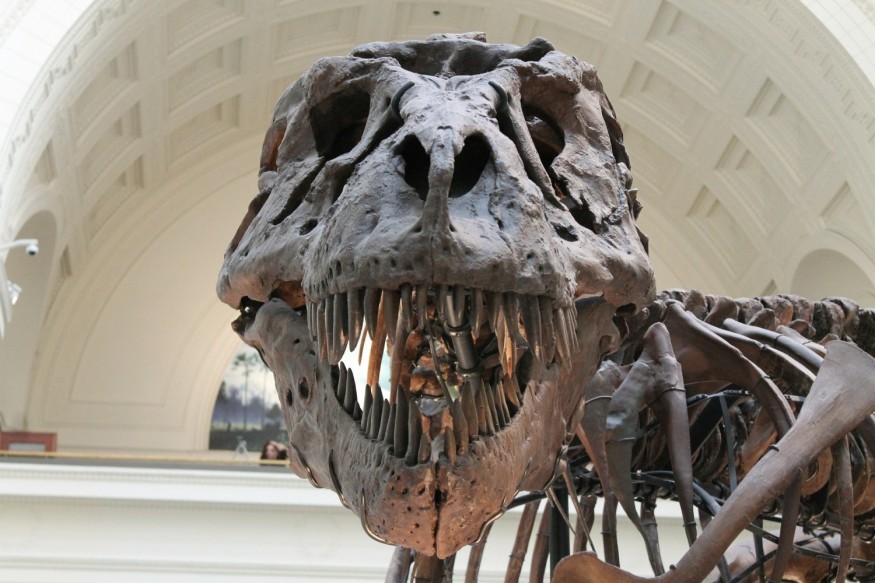T. Rex had small eyes according to a new study published in Communications Biology. The research led by Dr. Stephan Lautenschlager, senior lecturer for palaeobiology at the University of Birmingham revealed that carnivores and herbivores have different eye shapes.
T. Rex Had Small Keyhole-Shaped Eye Sockets and Short Arms
A new study learned that T. Rex had small eyes to allow them for stronger bites. Science Times previously reported that they have large skulls but smaller arms. The size of the arms was reportedly reduced due to the massive size of their skulls, which was used to attract a potential mate.
The researchers discovered that large theropods had more keyhole-shaped eye sockets than their ancestors and that ancient species tended to have circular-like eye sockets in comparison to more recent species.
To come up with this conclusion, Lautenschlager examined the eye sockets of 410 fossilized reptile specimens from the Mesozoic era, between 252 and 66 million years ago.
A circular eye socket was still present in the majority of plant-eating species and young large dinosaurs, according to the study. Only large adult carnivores developed other eye socket morphologies, such as those with an elliptical, keyhole, or figure-of-eight shape.
Dr. Lautenschlager said that in the species, the eyeball actually occupied only the upper portion of the eye socket. In comparison to the size of the skull, this also resulted in a relative decrease in eye size. The researchers also considered what might have happened if the growth of the skull and the size of the eyes had occurred simultaneously.
In this case, T.Rex's eyes would have been up to 11 inches (30 cm) in diameter and almost 44 lbs (20 kg) heavier than they are today, which are estimated to be 5.1 inches (13 cm) and 4.4 lbs, respectively (2 kg).
T. Rex Had Big Bite
According to a post in LiveScience, University of Kansas paleontologist David Burnham said that T.Rex was a huge carnivore and primarily herbivorous dinosaur.
The predator obtained its food through scavenging and hunting, grew incredibly quickly, and consumed hundreds of pounds at once. An article by UC Berkeley stated that Jack Tseng's research revealed that an adult
T. Rex has a biting force of about 35,000 newtons or 300 newtons for humans. Prior estimates of the bite force of juvenile T. Rexes were much lower, at around 4,000 newtons. This is based either on the mathematically scaled-down bite force of adult T. Rexes or the reconstruction of the jaw muscles.
Small Eyes Evolve for Better Big Bites
Based on the study the predators' unusual elliptical or oval eye sockets may have evolved to lessen the impact on their skulls as they pounced on prey.

ALSO READ : Tyrannosaurus Rex Speed Found to be Surprisingly Slow That Even Humans Can 'Outwalk' Them
They hypothesize that theropod eyeball space may have decreased as a result of narrower eye socket evolution. However, it may have increased space for jaw muscles and strengthened theropod skulls.
They may have been able to bite more forcefully as a result, perhaps at the expense of accommodating larger eyes, which, according to earlier research, may enhance vision.
Researchers compared the forces that a theoretical model reptile skull with five different eye socket shapes was subjected to investigate the effects of eye socket shape on skull structure and function. They discovered that a skull with a rounded eye socket was more vulnerable to high stresses when being bit.
However, stresses were significantly reduced if these were swapped out for different eye socket shapes. The experts hypothesized that this enabled apex predators, like the T. Rex, to evolve powerful bites without sacrificing skull stability.
RELATED ARTICLE : Research Suggests that T-Rex Had a Remarkable Sense of Smell
Check out more news and information on Environment in Science Times.










